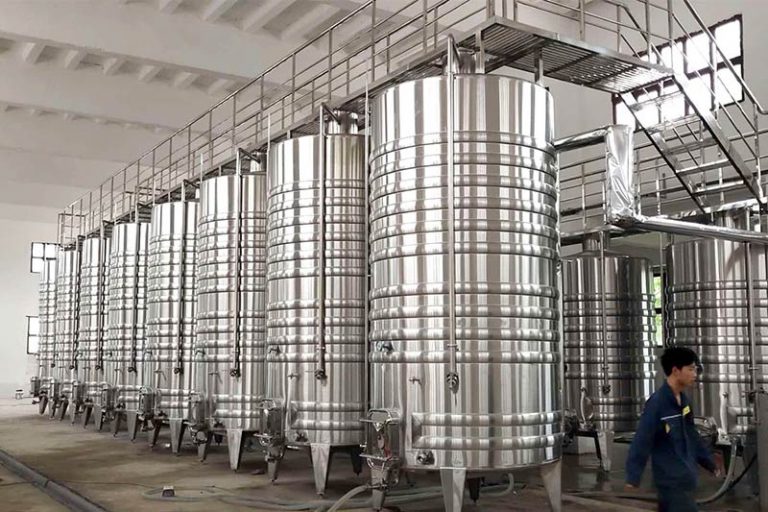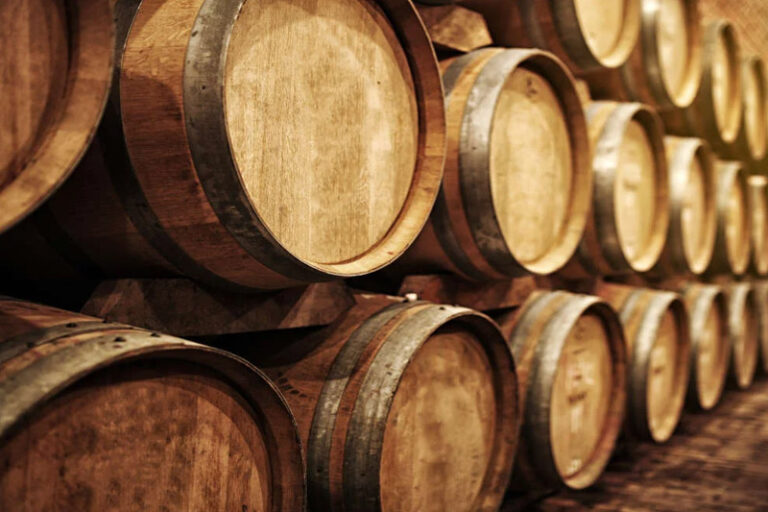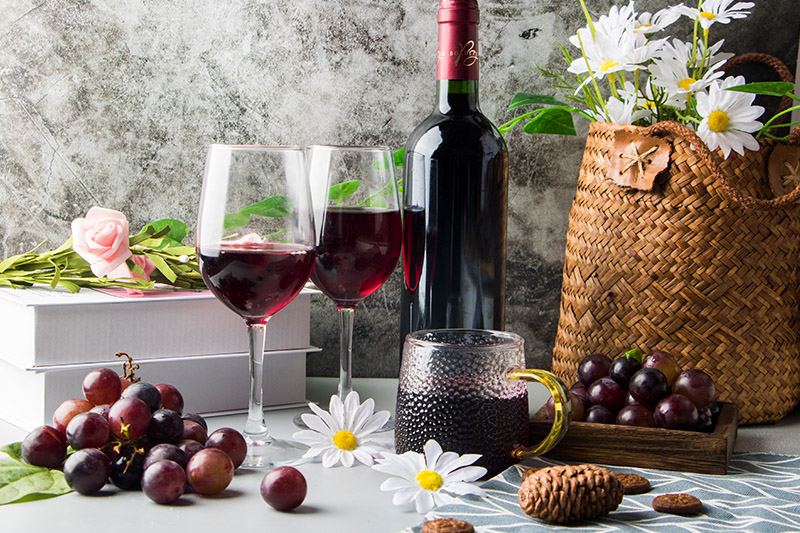The storage and brewing of wine is a delicate process, in which the selection of wine tanks plays a vital role. Whether you are a professional winery, a home winemaker, or a wine lover, choosing the right wine can affect the flavor, aging effect, and storage quality of the wine. There are many types of wine tanks on the market, and they are made of different materials. How to find the most suitable wine among so many choices? Micet Craft will explore the definition, types, materials, and selection methods of wine tanks in depth to help you make a wise choice.
What is a wine tank?
A wine tank is a container used to store or ferment wine. Its function is to provide a stable environment for the wine to mature and develop its flavor under suitable conditions. Traditionally, oak barrels are the most common wine storage containers, but with the development of technology and changes in demand, the types of wine tanks have gradually become richer, and the materials are no longer limited to wood but also include ceramics, stainless steel, glass, and even concrete.
Different types of wine tanks will have different effects on the taste, color, and aroma of wine, so it is particularly important to choose the right wine tank.

Types of Wine Tanks
Oak Barrels
Oak barrels are the most common containers in traditional winemaking and aging, which can give the wine a rich aroma and a more complex taste. The micro-oxidation of oak can gradually soften the tannins of the wine, making the wine more rounded, while also bringing unique flavors such as vanilla, caramel, smoke, and nuts, enhancing the layering of the wine. Oak barrels of different origins and types, such as French oak and American oak, will give the wine different flavor characteristics. Although oak barrels are very helpful in improving the quality of wine, they are expensive, have a limited service life, and need to be replaced and maintained regularly, so they are mostly used in the brewing of high-end wines.
Stainless steel tanks
Stainless steel tanks have become the preferred storage container for modern wineries due to their excellent sealing and stability. It does not have any additional impact on the flavor of the wine and can retain the purity and fresh fruity aroma of the wine, so it is particularly suitable for brewing refreshing white wines or light red wines. Stainless steel tanks have good temperature control performance, which facilitates precise management of the fermentation process and ensures that the wine matures under ideal conditions. In addition, it is easy to clean, corrosion-resistant, and has a long service life, making it suitable for large-scale production and long-term storage. Although stainless steel tanks cannot provide oxidation, making the complexity of the wine relatively low, their shortcomings can be compensated to a certain extent by using oak chips or oak strips.
Ceramic Pots
Ceramic pots are a winemaking container with a long history and are still widely used in some traditional winemaking areas. The micro-oxidation capacity of ceramics is between that of oak and stainless steel, which can provide a gentle aging environment for wine, making the wine more delicate, while not giving the wine an extra wood flavor like oak barrels. Ceramic pots are usually used for natural wines or wines brewed by ancient methods, making the wine purer and the flavor more layered. However, because ceramic pots are fragile, difficult to store and transport, and complex to clean and maintain, they are relatively rarely used in modern wineries but are still favored by some traditional winemakers.
Glass Bottles
Glass bottles are completely inert storage containers that will not affect the flavor of the wine, making them suitable for short-term storage or home winemaking. Their transparent properties allow for intuitive observation of changes in the wine, making it easy to monitor the state of the wine at any time. Glass bottles are often used for experimental winemaking, small-batch production, or personal collections, and are particularly suitable for storing young wines or wines with prominent fruity flavors. However, since glass is not breathable, it is not suitable for long-term aging, otherwise, it may cause the wine to lack room for development and cause the flavor to stagnate. In addition, glass bottles are relatively fragile and easy to break, so extra care must be taken during handling and storage.
Concrete tanks
Concrete tanks have been favored by more and more modern winemakers in recent years. They combine the advantages of oak barrels and stainless steel tanks, providing a stable micro-oxidation environment for wine, making the wine more balanced without giving it additional flavor. The breathability of concrete can promote the natural maturation of wine, making it taste softer while maintaining the purity of the fruit flavor. In addition, concrete tanks have excellent temperature regulation capabilities and are not easily affected by the external environment, which helps the wine mature stably under ideal conditions. However, concrete tanks are heavy, inconvenient to carry and maintain, and have high costs, so they are mainly used for the production of high-end wines in specific wineries.

How to choose the right wine tank for yourself?
Clarify the purpose and needs
Before choosing a wine tank, you first need to clarify the purpose. If it is used for the fermentation stage of wine, you should choose a fermentation tank with good temperature control performance, such as a stainless steel tank or a concrete tank, to ensure the stability of the fermentation process. If it is used for short-term storage, a stainless steel tank or a glass bottle with strong sealing is more suitable to maintain the fresh fruity aroma of the wine. For long-term aging needs, oak barrels or concrete tanks should be considered, because they can promote moderate oxidation and make the wine more complex and mellow.
Choose the right material
Wine tanks of different materials are suitable for different styles of wine. Oak barrels can give the wine a unique flavor, such as vanilla, caramel, and nuttiness, and promote the softening of tannins, so they are suitable for wines that require complex flavors and a longer aging period, such as Cabernet Sauvignon and Chardonnay. Stainless steel tanks do not change the original flavor of the wine and are suitable for wines that retain fruity aromas and a refreshing taste, such as Sauvignon Blanc and Pinot Noir. The micro-oxidation effect of ceramic pots and concrete tanks is between oak and stainless steel, and is suitable for wines that want to add layers to the wine but do not want to bring in wood flavors. Glass bottles are usually used for short-term storage or home winemaking and are not suitable for long-term aging.
Determine the appropriate capacity
The capacity of a wine tank directly affects the storage effect and ease of use. If it is produced by a large winery, it is necessary to choose a larger capacity tank to ensure the stability of mass production, such as a stainless steel tank or oak barrel of more than 500 liters. For small wineries or individual wine enthusiasts, small tanks of less than 100 liters can be selected for easy management and storage. For home storage, it is recommended to choose a 10-50 liter glass bottle or a small oak barrel to control the amount of drinking and preserve the quality.
Consider the storage environment and maintenance costs
The choice of wine tanks also needs to consider the temperature, humidity, and ventilation conditions of the storage environment. If the storage environment is relatively constant and the temperature fluctuation is not large, oak barrels or concrete tanks can be good choices because they help the wine mature slowly. If the storage environment has a large temperature difference, the temperature control ability of stainless steel tanks will be more advantageous. In terms of maintenance costs, oak barrels need to be replaced regularly and cleaning is more complicated, while stainless steel tanks and glass bottles are easy to clean and have lower maintenance costs. Therefore, when choosing wine tanks, long-term maintenance costs and management convenience also need to be considered comprehensively.
Combined with personal budget and preference
Wine tanks of different materials and specifications have different prices, so budget is also an important consideration. Oak barrels are expensive and suitable for brewing high-end wines, while stainless steel tanks and glass bottles are relatively cheap and suitable for large-scale production or personal storage. If you pursue traditional flavors, you can choose ceramic pots or concrete tanks; if you prefer fruity and refreshing wines, stainless steel tanks or glass bottles are more suitable. The final choice should be comprehensively evaluated based on your own winemaking style, budget, and storage conditions.

Summarize
Choosing a wine tank is an important step in the wine-making and storage process. Different tank types and materials will affect the maturation method and final quality of the wine. Therefore, when choosing, you should consider multiple factors such as purpose, material, capacity, storage environment, and budget to ensure that the wine tank you choose can meet your needs so that the wine can mature under the best conditions and show the ideal flavor and quality.

